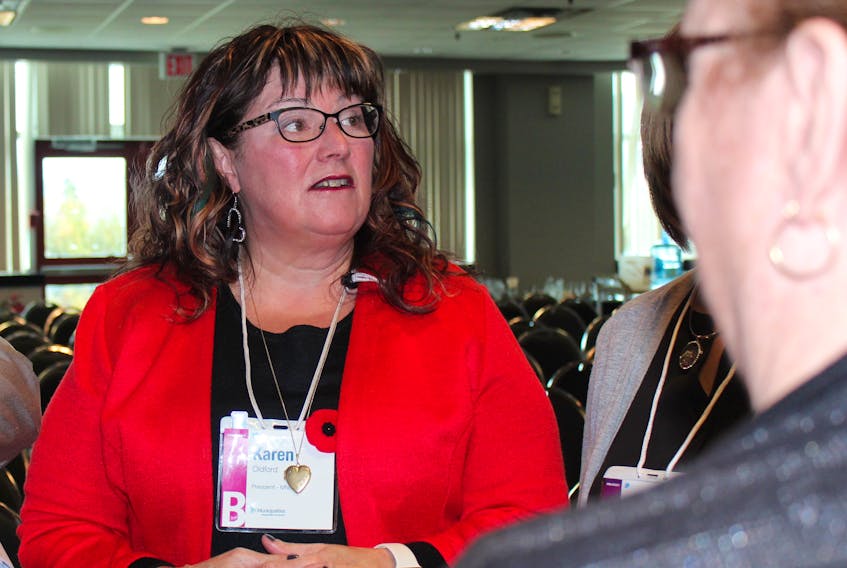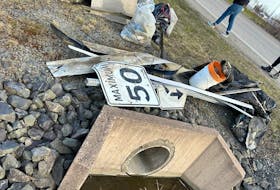CORNER BROOK, NL — Transparency of councils throughout the province is not so clear in its interpretation and implementation.
A perusal of some towns’ webpages does make it clear that the reporting of council minutes is more than varied.
Some councils provide detailed explanations of agenda items, discussions and decisions. In this case, a resident can learn what their council is doing and what is happening throughout their town.
Sometimes a little information is revealed publicly. A citizen can at least see that things are happening, but often would have to seek out specific details to get the ins and outs of particular items.
Other towns list little more than an agenda item title, stating that the item was for information purposes, or noting whether it was approved or denied.
In these cases, residents are left wondering what exactly is happening, sometimes leading to accusations of things being held from them — the “behind-closed-doors” to “something to hide” perceptions.
Under the Municipalities Act, council meeting minutes must be made available for public viewing. The protocol is that minutes from the previous meeting will be brought before council at its next public meeting for approval.
However, there is no clear set of guidelines or standards as to what must be revealed in those minutes.
Also, it is not required that councils or staff post such minutes on social media or websites, although that option is available to them, according to Karen Oldford, president of Municipalities Newfoundland and Labrador (MNL).
“I think most communities try to get (minutes) out there because they want residents engaged – I think everybody does,” she told the Nor’wester Thursday, Oct. 2 at the Municipalities Newfoundland and Labrador annual general meeting in Corner Brook.
“Some communities are so small that they can’t afford a website.”
Craig Pollett, MNL’s chief executive officer, confirmed the only requirement for a council or staff is to ensure those minutes are available “during normal business hours” upon request following their approval.
A number of documents fit within those criteria, including the adopted minutes of council.
As for what is published in the minutes, Oldford said discussions around particular motions do not have to be included — although sometimes they are.
She said providing a recap of conversations used to be more common in years past, but under Robert’s Rules of Order, it is not required.
“That is the debate that goes around the motion, but the motion should stand on its own legs,” she said.
A mover and a second for motions are to be recorded. Most times, any council member who objects to the approval of a motion will ask for the minutes to reflect their vote, she noted. Sometimes their rationale for that objection is noted.
The decision on how much detail is provided falls upon each individual council and its staff. Pollett said most would just provide a record of the decisions made. Particular reports or public documents would be part of the minutes package available for perusal at town halls.
“Every council is a little bit different, but if you were to ask for the document, if it was part of the minutes and approved, it should be available,” Oldford said.
There are details of agenda items or motions that contain sensitive information that must not be made available for public viewing. The recently changed Access to Information Laws now limit that to examples where making it public could do harm to certain people, for example.
Releasing information that could identify a person, or their personal information remains a problematic area, according to Pollett.
“That’s actually been a really difficult thing for a lot of municipalities because they are really not sure now what they can and cannot release,” he said. “As you would expect, they are going to err on the side of caution.”
Oldford encourages all councils to be as open and transparent as possible, recognizing there is a balance with releasing personal or business information that can be detrimental or harmful.
A standard for reporting council minutes across the province would be difficult, she said, particularly because of the sizes and resources of some municipalities.
“The one-size-fits all may not necessarily work,” she said. “Seventy-five per cent of our municipalities have one or fewer employees, which means they probably have a part-time clerk that comes in and scribbles down some minutes and pays some bills.
“You can have some general guidelines of what should be included in your minutes, and we encourage councils to adopt what process they are going to use. That is the biggest thing.”









